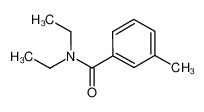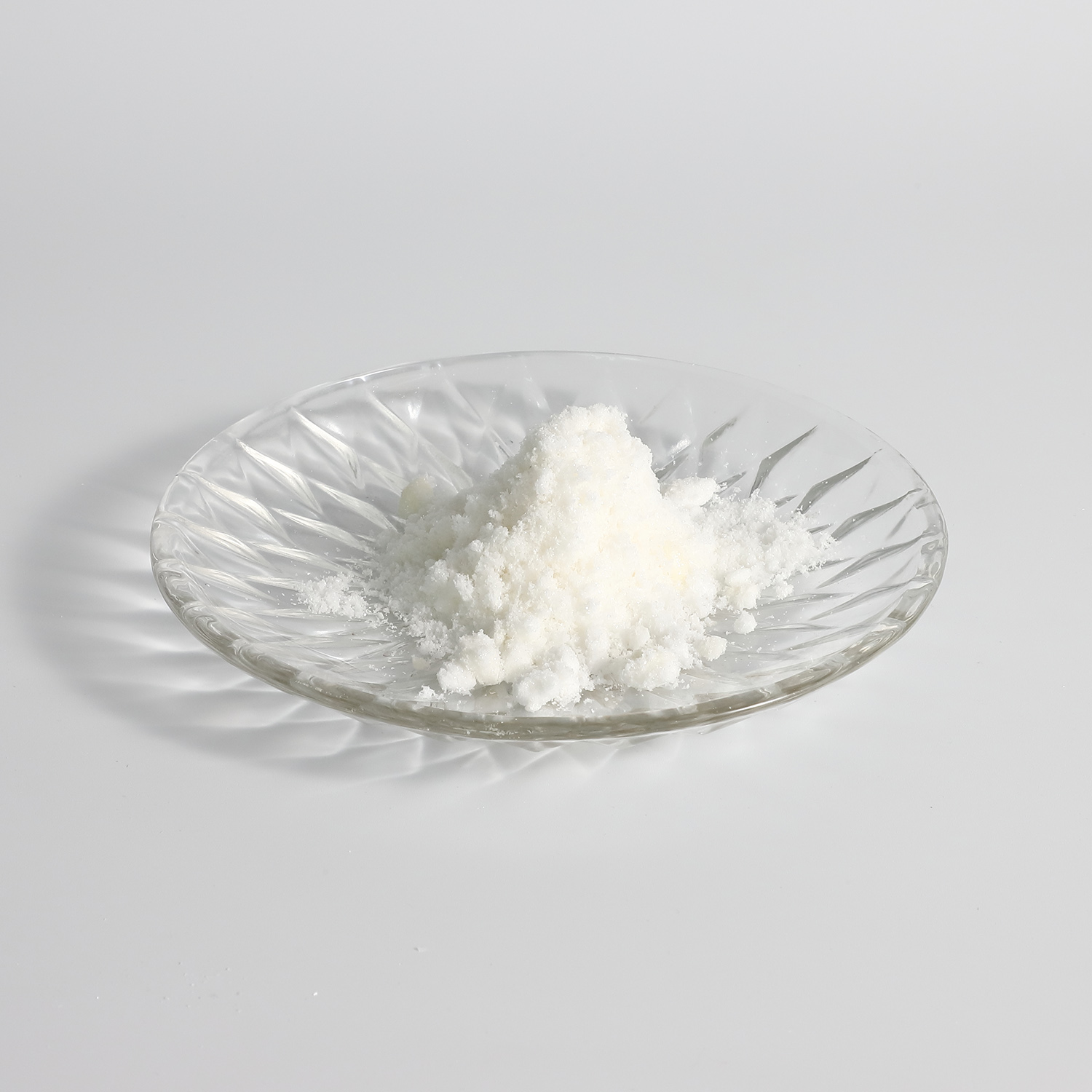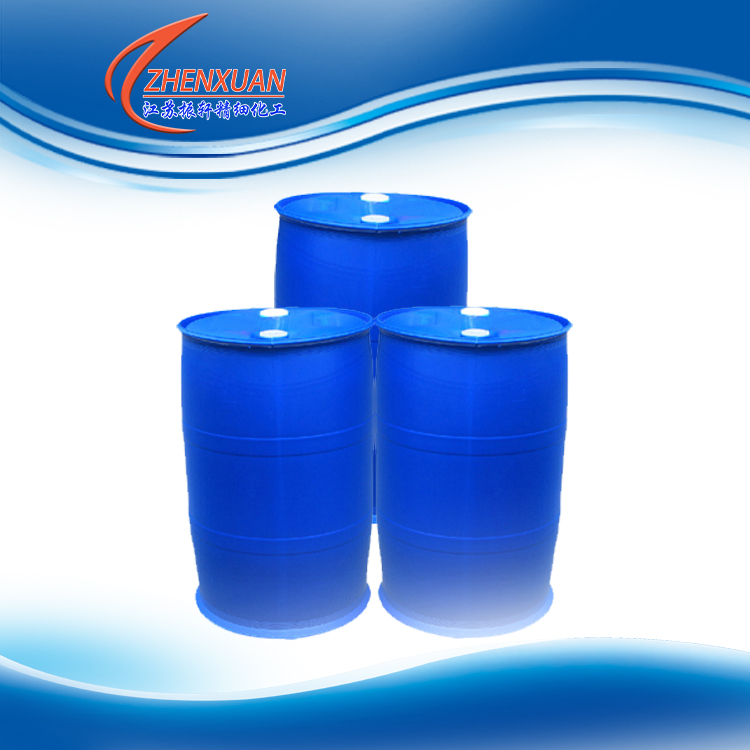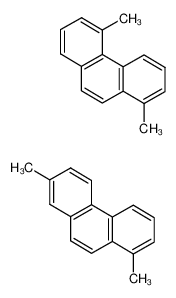| Product name | N,N-diethyl-m-toluamide |
|---|
| Product number | - |
|---|---|
| Other names | Diethyltoluamide |
| Identified uses | For industry use only. Halogenated pesticides and related compounds |
|---|---|
| Uses advised against | no data available |
| Company | MOLBASE (Shanghai) Biotechnology Co., Ltd. |
|---|---|
| Address | Floor 4 & 5, Building 12, No. 1001 North Qinzhou Road, Xuhui District, Shanghai, China |
| Telephone | +86(21)64956998 |
| Fax | +86(21)54365166 |
| Emergency phone number | +86-400-6021-666 |
|---|---|
| Service hours | Monday to Friday, 9am-5pm (Standard time zone: UTC/GMT +8 hours). |
Acute toxicity - Oral, Category 4
Skin irritation, Category 2
Eye irritation, Category 2
Hazardous to the aquatic environment, long-term (Chronic) - Category Chronic 3
2.2 GHS label elements, including precautionary statements| Pictogram(s) |  |
|---|---|
| Signal word | Warning |
| Hazard statement(s) | H302 Harmful if swallowed H315 Causes skin irritation H319 Causes serious eye irritation H412 Harmful to aquatic life with long lasting effects |
| Precautionary statement(s) | |
| Prevention | P264 Wash ... thoroughly after handling. P270 Do not eat, drink or smoke when using this product. P280 Wear protective gloves/protective clothing/eye protection/face protection. P273 Avoid release to the environment. |
| Response | P301+P312 IF SWALLOWED: Call a POISON CENTER/doctor/…if you feel unwell. P330 Rinse mouth. P302+P352 IF ON SKIN: Wash with plenty of water/... P321 Specific treatment (see ... on this label). P332+P313 If skin irritation occurs: Get medical advice/attention. P362+P364 Take off contaminated clothing and wash it before reuse. P305+P351+P338 IF IN EYES: Rinse cautiously with water for several minutes. Remove contact lenses, if present and easy to do. Continue rinsing. P337+P313 If eye irritation persists: Get medical advice/attention. |
| Storage | none |
| Disposal | P501 Dispose of contents/container to ... |
none
3.Composition/information on ingredients 3.1 Substances| Chemical name | Common names and synonyms | CAS number | EC number | Concentration |
|---|---|---|---|---|
| N,N-diethyl-m-toluamide | N,N-diethyl-m-toluamide | 134-62-3 | none | 100% |
Consult a physician. Show this safety data sheet to the doctor in attendance.
If inhaledFresh air, rest. Half-upright position. Artificial respiration may be needed. Refer for medical attention.
In case of skin contactFirst rinse with plenty of water for at least 15 minutes, then remove contaminated clothes and rinse again. Refer for medical attention .
In case of eye contactFirst rinse with plenty of water for several minutes (remove contact lenses if easily possible), then refer for medical attention.
If swallowedRinse mouth. Do NOT induce vomiting. Rest. Refer for medical attention .
4.2 Most important symptoms/effects, acute and delayedSYMPTOMS: Symptoms of exposure to this compound may include eye and mucous membrane irritation. It can cause contact dermatitis, conjunctivitis, exacerbation of seborrhea and acne vulgaris. Eye contact may result in a smarting sensation. Ingestion of this material can cause central nervous system disturbances. Symptoms resulting from exposure to this compound include disorientation, staggering gait, slurred speech, crying out, episodes consisting of stiffening into a sitting position, extending of extremities, flexing of the fingers and dorsiflexing the toes. It may also cause jaundice, aplastic anemia, bleeding, convulsive seizure or death. It may irritate tender areas of the skin. It may also cause severe eye injury. Other symptoms are desquamation about the nose, dryness of face, a slight tingling sensation and a bullous eruption in the antecubital fossae. Irritation of the gastro-intestinal tract and coma are possible. It may cause purpuric or ecchymotic areas. ACUTE/CHRONIC HAZARDS: This compound is irritating to the skin, eyes and mucous membranes. When heated to decomposition it emits toxic fumes of carbon monoxide, carbon dioxide and nitrogen oxides. It may be harmful by inhalation or ingestion.
4.3 Indication of immediate medical attention and special treatment needed, if necessaryDecontaminate the skin with soap and water ... . Eye contamination should be removed by prolonged flushing of the eye with copious amounts of clean water or saline. If irritation persists, specialized medical treatment should be obtained. Topical steroids and oral antihistamines have been used for severe skin reactions that occasionally follow application of DEET.
5.Fire-fighting measures 5.1 Extinguishing media Suitable extinguishing mediaSuitable extinguishing media: Use water spray, alcohol-resistant foam, dry chemical or carbon dioxide.
5.2 Specific hazards arising from the chemicalThis chemical is combustible.
5.3 Special protective actions for fire-fightersWear self-contained breathing apparatus for firefighting if necessary.
6.Accidental release measures 6.1 Personal precautions, protective equipment and emergency proceduresUse personal protective equipment. Avoid dust formation. Avoid breathing vapours, mist or gas. Ensure adequate ventilation. Evacuate personnel to safe areas. Avoid breathing dust. For personal protection see section 8.
6.2 Environmental precautionsVentilation. Collect leaking and spilled liquid in sealable containers as far as possible. Absorb remaining liquid in sand or inert absorbent. Then store and dispose of according to local regulations. Personal protection: complete protective clothing including self-contained breathing apparatus.
6.3 Methods and materials for containment and cleaning upACCIDENTAL RELEASE MEASURES: Personal precautions, protective equipment and emergency procedures: Use personal protective equipment. Avoid breathing vapors, mist or gas. Ensure adequate ventilation. Environmental precautions: Prevent further leakage or spillage if safe to do so. Do not let product enter drains. Discharge into the environment must be avoided. Methods and materials for containment and cleaning up: Soak up with inert absorbent material and dispose of as hazardous waste. Keep in suitable, closed containers for disposal.
7.Handling and storage 7.1 Precautions for safe handlingAvoid contact with skin and eyes. Avoid formation of dust and aerosols. Avoid exposure - obtain special instructions before use.Provide appropriate exhaust ventilation at places where dust is formed. For precautions see section 2.2.
7.2 Conditions for safe storage, including any incompatibilitiesSeparated from strong oxidants, acids, organic nitro compounds and food and feedstuffs. Keep in a well-ventilated room.Keep container tightly closed in a dry and well-ventilated place. Containers which are opened must be carefully resealed and kept upright to prevent leakage.
8.Exposure controls/personal protection 8.1 Control parameters Occupational Exposure limit valuesno data available
Biological limit valuesno data available
8.2 Appropriate engineering controlsHandle in accordance with good industrial hygiene and safety practice. Wash hands before breaks and at the end of workday.
8.3 Individual protection measures, such as personal protective equipment (PPE) Eye/face protectionSafety glasses with side-shields conforming to EN166. Use equipment for eye protection tested and approved under appropriate government standards such as NIOSH (US) or EN 166(EU).
Skin protectionWear impervious clothing. The type of protective equipment must be selected according to the concentration and amount of the dangerous substance at the specific workplace. Handle with gloves. Gloves must be inspected prior to use. Use proper glove removal technique(without touching glove's outer surface) to avoid skin contact with this product. Dispose of contaminated gloves after use in accordance with applicable laws and good laboratory practices. Wash and dry hands. The selected protective gloves have to satisfy the specifications of EU Directive 89/686/EEC and the standard EN 374 derived from it.
Respiratory protectionWear dust mask when handling large quantities.
Thermal hazardsno data available
9.Physical and chemical properties| Physical state | Colorless to Amberlike Liquid |
|---|---|
| Colour | Nearly colorless to amberlike liquid |
| Odour | Faint, characteristic odor |
| Melting point/ freezing point | 197°C(lit.) |
| Boiling point or initial boiling point and boiling range | 160°C/19mmHg(lit.) |
| Flammability | Combustible. Gives off irritating or toxic fumes (or gases) in a fire. |
| Lower and upper explosion limit / flammability limit | no data available |
| Flash point | 140°C(lit.) |
| Auto-ignition temperature | 358°C |
| Decomposition temperature | no data available |
| pH | no data available |
| Kinematic viscosity | 13.3 cP at 30°C |
| Solubility | In water:NEGLIGIBLE |
| Partition coefficient n-octanol/water (log value) | log Kow = 2.02 |
| Vapour pressure | <0.01 mm Hg ( 25 °C) |
| Density and/or relative density | 0.9955 |
| Relative vapour density | 6.7 (vs air) |
| Particle characteristics | no data available |
no data available
10.2 Chemical stabilityStable under recommended storage conditions.
10.3 Possibility of hazardous reactionsThe vapour is heavier than air.N,N-DIETHYL-M-TOLUAMIDE is incompatible with strong acids, strong bases and strong oxidizing agents. It hydrolyzes slowly in the presence of water. It has a solvent effect on most plastics, paints, and varnishes. It is also incompatible with rayon, acetate or dynel clothing.
10.4 Conditions to avoidno data available
10.5 Incompatible materialsIncompatible materials: Strong oxidizing agents, strong acids, strong bases, strong reducing agents
10.6 Hazardous decomposition productsWhen heated to decomposition it emits toxic fumes of /nitrogen oxides/.
11.Toxicological information Acute toxicity- Oral: LD50 Rat oral 1892 mg/kg
- Inhalation: LC50 Rat inhalation >4100 mg/cu m/4 hr
- Dermal: no data available
no data available
Serious eye damage/irritationno data available
Respiratory or skin sensitizationno data available
Germ cell mutagenicityno data available
CarcinogenicityEPA: Not classifiable as to human carcinogenicity. IARC: Not evaluated. NTP: Not evaluated
Reproductive toxicityno data available
STOT-single exposureno data available
STOT-repeated exposureno data available
Aspiration hazardno data available
12.Ecological information 12.1 Toxicity- Toxicity to fish: LC50; Species: Pimephales promelas (fathead minnow); Conditions: freshwater, flow through, 25°C, pH 7.3, hardness 45.0 mg/L CaCO3, alkalinity 47.0 mg/L CaCO3, dissolved oxygen 6.1 mg/L; Concentration: 110000 ug/L for 96 hr (95% confidence interval: 106000-114000 ug/L) /98% purity
- Toxicity to daphnia and other aquatic invertebrates: EC50; Species: Daphnia magna (Water Flea) age <24 hr neonate; Conditions: freshwater, renewal, 19.4-20.3°C, pH 8.2-8.6, hardness 134-136 mg/L CaCO3, alkalinity 179-182 mg/L CaCO3, dissolved oxygen > or =7.7 mg/L; Concentration: 24000 ug/L for 21 days (95% confidence interval: 21000-27000 ug/L); Effect: reproduction, decreased progeny counts/numbers /98.68% purity
- Toxicity to algae: no data available
- Toxicity to microorganisms: no data available
AEROBIC: DEET, present at 100 mg/L, did not biodegrade in 4 weeks using an activated sludge inoculum at 30 mg/L in the Japanese MITI(1). However, in a OECD 301B test DEET was shown to biodegrade 83.8% in 4 weeks using activated sewage sludge and measuring carbon dioxide produced(2). DEET reached 30% and 37% of the theoretical oxygen demand and chemical oxygen demand after 7 days in another test, but biodegradation seemed to halt after reaching 40 and 48%, respectively(2). DEET was shown to biodegrade using Po River water, forming three transformation products(3). Pseudomonas putida DTB (isolated from activated sludge from a municipal wastewater treatment plant in Ithaca, NY) degraded DEET to 3-methylbenzoate and diethylamine under aerobic conditions(4).
12.3 Bioaccumulative potentialBCF values of <2.4 and 0.8-2.4 were measured using carp (Cyprinus carpio) which were exposed to 0.05 and 0.50 mg/L of DEET, respectively, over a 6-week period(1). According to a classification scheme(2), these BCF values suggest the potential for bioconcentration in aquatic organisms is low(SRC).
12.4 Mobility in soilUsing a structure estimation method based on molecular connectivity indices(1), the Koc of DEET can be estimated to be 115(SRC). According to a classification scheme(2), this estimated Koc value suggests that DEET is expected to have moderate mobility in soil.
12.5 Other adverse effectsno data available
13.Disposal considerations 13.1 Disposal methods ProductThe material can be disposed of by removal to a licensed chemical destruction plant or by controlled incineration with flue gas scrubbing. Do not contaminate water, foodstuffs, feed or seed by storage or disposal. Do not discharge to sewer systems.
Contaminated packagingContainers can be triply rinsed (or equivalent) and offered for recycling or reconditioning. Alternatively, the packaging can be punctured to make it unusable for other purposes and then be disposed of in a sanitary landfill. Controlled incineration with flue gas scrubbing is possible for combustible packaging materials.
14.Transport information 14.1 UN Number| ADR/RID: UN3532 | IMDG: UN3532 | IATA: UN3532 |
| ADR/RID: POLYMERIZING SUBSTANCE, LIQUID, STABILIZED, N.O.S. |
| IMDG: POLYMERIZING SUBSTANCE, LIQUID, STABILIZED, N.O.S. |
| IATA: POLYMERIZING SUBSTANCE, LIQUID, STABILIZED, N.O.S. |
| ADR/RID: 4.1 | IMDG: 4.1 | IATA: 4.1 |
| ADR/RID: III | IMDG: III | IATA: III |
| ADR/RID: no | IMDG: no | IATA: no |
no data available
14.7 Transport in bulk according to Annex II of MARPOL 73/78 and the IBC Codeno data available
15.Regulatory information 15.1 Safety, health and environmental regulations specific for the product in question| Chemical name | Common names and synonyms | CAS number | EC number |
|---|---|---|---|
| N,N-diethyl-m-toluamide | N,N-diethyl-m-toluamide | 134-62-3 | none |
| European Inventory of Existing Commercial Chemical Substances (EINECS) | Listed. | ||
| EC Inventory | Listed. | ||
| United States Toxic Substances Control Act (TSCA) Inventory | Listed. | ||
| China Catalog of Hazardous chemicals 2015 | Not Listed. | ||
| New Zealand Inventory of Chemicals (NZIoC) | Listed. | ||
| Philippines Inventory of Chemicals and Chemical Substances (PICCS) | Listed. | ||
| Vietnam National Chemical Inventory | Listed. | ||
| Chinese Chemical Inventory of Existing Chemical Substances (China IECSC) | Listed. | ||
| Creation Date | Aug 10, 2017 |
|---|---|
| Revision Date | Aug 10, 2017 |
- CAS: Chemical Abstracts Service
- ADR: European Agreement concerning the International Carriage of Dangerous Goods by Road
- RID: Regulation concerning the International Carriage of Dangerous Goods by Rail
- IMDG: International Maritime Dangerous Goods
- IATA: International Air Transportation Association
- TWA: Time Weighted Average
- STEL: Short term exposure limit
- LC50: Lethal Concentration 50%
- LD50: Lethal Dose 50%
- EC50: Effective Concentration 50%
- IPCS - The International Chemical Safety Cards (ICSC), website: http://www.ilo.org/dyn/icsc/showcard.home
- HSDB - Hazardous Substances Data Bank, website: https://toxnet.nlm.nih.gov/newtoxnet/hsdb.htm
- IARC - International Agency for Research on Cancer, website: http://www.iarc.fr/
- eChemPortal - The Global Portal to Information on Chemical Substances by OECD, website: http://www.echemportal.org/echemportal/index?pageID=0&request_locale=en
- CAMEO Chemicals, website: http://cameochemicals.noaa.gov/search/simple
- ChemIDplus, website: http://chem.sis.nlm.nih.gov/chemidplus/chemidlite.jsp
- ERG - Emergency Response Guidebook by U.S. Department of Transportation, website: http://www.phmsa.dot.gov/hazmat/library/erg
- Germany GESTIS-database on hazard substance, website: http://www.dguv.de/ifa/gestis/gestis-stoffdatenbank/index-2.jsp
- ECHA - European Chemicals Agency, website: https://echa.europa.eu/































